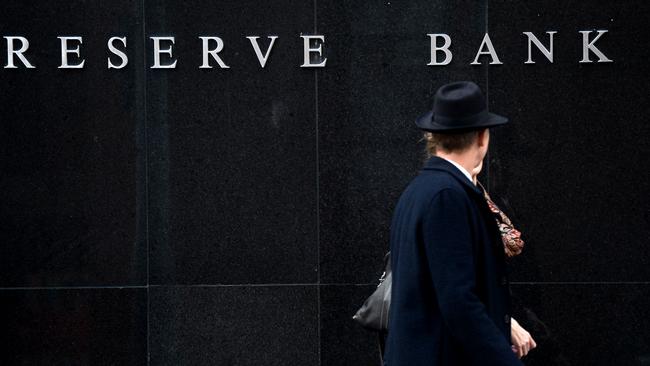Covid-19 requires an inquiry — and a complete economic rethink

The royal commission into Australia’s handling of the coronavirus pandemic will be a long, dismal affair although we might have to wait for a change of government for it to be appointed — the current group of political leaders would prefer to focus on the future while giving themselves an A for effort.
And admittedly the effort has been, and still is, stupendous. There has never been a time in Australia’s peacetime history when politicians, public servants and health officials have worked so hard and under such stress.
Will there be an inquiry into Australia’s response? There certainly should be — this is unlikely to be the last pandemic, so lessons need to be learned.
The agenda is already looking quite long: the Ruby Princess, Victoria’s hotel quarantine debacle, the earlier NSW quarantine debacle, whether an elimination strategy should have been pursued instead of suppression, the way nursing homes operate, the state border controls, whether masks should have been mandated earlier, why didn’t the COVIDSafe app work, why didn’t the Australian government get some of that US intelligence about a nascent pandemic that President Trump was ignoring in late 2019 (or did they get it and ignore it as well?), and so on.
There should also be a separate look at the economic response, both fiscal and monetary, to learn from any mistakes, but more importantly to chart a course for dealing with the economic and fiscal consequences of 2020.
There should be a forensic examination of all the income support and stimulus measures, whether they should have been quicker and whether the limitations and exclusions were justified or fair, or even just a good idea.
And let’s have a transparent, independent expert look at the options for dealing with the mountainous government debt that’s coming, including any potential application of some of the ideas in Modern Monetary Theory.
Specifically, how much of the debt should reside on the Reserve Bank balance sheet, and what are the consequences of doing that, and of not doing that?
And more broadly, are monetary and fiscal policy as currently practised still fit for purpose?
No doubt Treasury and the Reserve Bank would prefer to keep these matters to themselves, and let us know the results of their considerations in due course (or not).
In fact it might be a good time to have another financial system inquiry to add to the previous four: Vernon (1965), Campbell (1981), Wallis (1997) and Murray (2014).
Each of those was 16 or 17 years after the previous one, so this would be sooner than normal. But given what has happened over the past seven years, and now the horrors of 2020, it’s time.
It may be time to revisit Sir James Vernon’s main recommendation in 1965 — for a permanent council of economic advisers, with 10 part-time members. This was flatly rejected by Prime Minister Robert Menzies, when he tabled the report no less, saying: “We unhesitatingly reject this idea.”
In fact Australia’s de facto council of economic advisers was then, and still is, the board of the Reserve Bank, then six years after the RBA’s foundation and with 10 part-time members. Now it’s just six. They do the job with monthly meetings but their brief is too narrowly focused on monetary policy and their deliberations too tightly controlled and too secret. And no one from outside Canberra oversees fiscal policy at all.
The big issue for review and then governance after the pandemic is the role of government in the economy and specifically, the relationship between fiscal and monetary policy.
Macquarie Bank’s Hong Kong-based strategist Viktor Shvets told me this week: “Over the last several decades the state has become more and more aggressive. That’s not going to end, that’s going to accelerate and every time ... we have a dislocation, whether it was 87 or 2000 or 2008 or 2020, people are basically clambering for a greater role of the state, not weaker role of the state.
“For example, 1987 (Black Monday), 2001 (dotcom) and 2008 (global financial crisis) massively turbocharged monetary policy. 2020 pandemic massively turbocharging fiscal policy.
“The next intersection we’re going to come to in the next several years when the next dislocation occurs will be complete fusion of fiscal and monetary policy. There will be no distinction between the two.”
QE since the GFC has brought monetary and fiscal policy closer together, with central banks buying trillions of dollars’ worth of government debt, but there is a fig leaf of separation because QE is ostensibly designed to support financial markets with liquidity and, in Australia, to suppress interest rates, rather than to fund government spending.
Shvets believes that separation won’t survive another dislocation, and the so-called “fringe” ideas of MMT will start to be employed.
Whether he’s right or not, the dislocation of 2020 is reason enough on its own to re-examine the assumptions on which monetary and fiscal policy have been based. After all, the RBA is admitting that monetary policy is in hibernation — that interest rates will be unmoved and close to zero for years. Fiscal policy is in the cave with it: the four-year forward estimate of government debt in the October 6 budget will be more than a trillion dollars and deficits will be entrenched for years.
The Keynesian fiscal idea of balanced budget through the cycle, deficits in bad times/surpluses in good times, is dead.
And the idea that the central bank can use monetary policy to fine-tune demand to achieve the stability of the currency, full employment and “the economic prosperity and welfare of the people of Australia” has not been true for years and won’t be true for years to come.
We need some of our best minds thinking about what comes next, not just those in Treasury and the RBA. The future is not going to be the same as the past.
Alan Kohler is the editor in chief of Eureka Report.






Time for an inquiry. In fact, make that two.